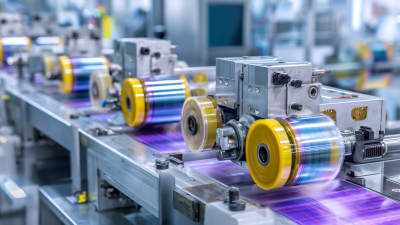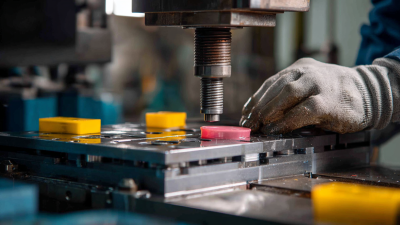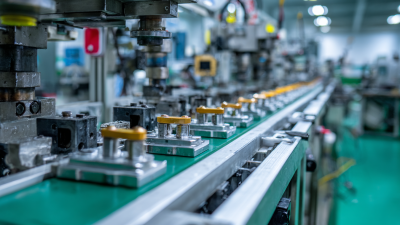Understanding the Science Behind Plastic Injection Molding for Innovative Manufacturing Solutions

As the technology evolves, so does the science behind it. Understanding the intricacies of plastic injection not only involves mastering the machinery but also demands a comprehensive grasp of the materials and processes involved. Advances in thermoplastic materials, coupled with innovations in computer-aided design and simulation technologies, have enhanced the potential for customization and efficiency in production. Furthermore, sustainability has become a focal point, with a growing emphasis on recyclable materials and eco-friendly practices, aligning with global efforts to reduce plastic waste. Consequently, businesses looking to stay competitive must delve deeply into the science of plastic injection molding, leveraging these innovations to develop innovative manufacturing solutions.
The Fundamentals of Plastic Injection Molding Explained
Plastic injection molding is a cornerstone of modern manufacturing, allowing for the creation of complex parts with high precision and efficiency. This process involves injecting molten plastic material into a mold cavity, where it cools and solidifies into the desired shape. According to a report by Grand View Research, the global plastic injection molding market was valued at approximately $288 billion in 2021 and is expected to grow at a compound annual growth rate (CAGR) of 5.1% from 2022 to 2030. This growth is driven by the increasing demand for lightweight and durable components across various industries, including automotive, consumer goods, and medical devices.
Understanding the fundamentals of plastic injection molding is essential for manufacturers seeking innovative solutions. Key factors influencing the process include material selection, mold design, and process parameters such as temperature and pressure. For instance, a study by the American Society of Mechanical Engineers highlighted that optimizing these parameters can reduce production cycles by up to 40%, significantly enhancing productivity. Furthermore, advancements in technology, such as the use of computer-aided design (CAD) and simulation software, allow for more intricate designs while minimizing material waste. This not only improves efficiency but also aligns with sustainability goals in the manufacturing sector.
Key Factors Influencing Material Selection in Injection Molding
Material selection is a critical aspect of plastic injection molding that can significantly influence the performance, cost, and sustainability of the final product. According to a report by Freedonia Group, the U.S. market for injection-molded plastics is expected to exceed $30 billion by 2024, highlighting the importance of choosing the right materials in this competitive landscape. Factors such as mechanical properties, thermal stability, and resistance to environmental stress contribute to the efficacy of selected materials, with polypropylenes and engineering thermoplastics, like polycarbonate and ABS, frequently cited as industry favorites due to their versatility and durability.
Furthermore, the Environmental Protection Agency (EPA) outlines sustainability as a growing concern within the plastics industry, making it essential for manufacturers to consider the environmental impact of their material choices. Bioplastics, such as PLA and PHA, are gaining traction due to their reduced carbon footprint and biodegradability, showcasing an innovative direction for future material selection. According to the Bioplastics Demand Study by European Bioplastics, the market for bioplastics is projected to grow significantly, indicating a shift towards more eco-friendly solutions in injection molding. Such trends reflect a broader move within the manufacturing sector towards sustainable practices while still meeting the demands for efficiency and product performance.
Understanding the Science Behind Plastic Injection Molding for Innovative Manufacturing Solutions
| Material Type | Density (g/cm³) | Melting Point (°C) | Tensile Strength (MPa) | Applications |
|---|---|---|---|---|
| Polypropylene (PP) | 0.90 | 160 | 30 | Packaging, Automotive Parts |
| Acrylonitrile Butadiene Styrene (ABS) | 1.04 | 105 | 40 | Consumer Goods, Toys |
| Polyethylene Terephthalate (PET) | 1.38 | 260 | 60 | Bottles, Containers |
| Polystyrene (PS) | 1.05 | 100 | 30 | Household Items, Toys |
| Nylon (Polyamide) | 1.13 | 220 | 75 | Mechanical Parts, Textiles |
Innovative Techniques to Optimize Injection Molding Processes
Plastic injection molding is a cornerstone of modern manufacturing, enhancing efficiency and precision in the production process. To optimize these processes, innovative techniques are continuously being developed. One such technique is the use of advanced simulation software, which allows manufacturers to predict potential issues in mold design and material flow before physical production begins. This not only reduces material waste but also shortens lead times, enabling faster turnaround from design to finished product.
Another promising approach involves the integration of IoT (Internet of Things) technology within injection molding machines. By equipping machines with smart sensors, manufacturers can monitor real-time data related to temperature, pressure, and cycle times. This data-driven insight allows for immediate adjustments and preventative maintenance, significantly enhancing the overall reliability and output quality. Furthermore, depending on mold specifications and material characteristics, the implementation of multi-material injection techniques can foster creativity in design, allowing for the production of complex geometries and improved functional components.
Troubleshooting Common Issues in Injection Molding Operations
Plastic injection molding is a prevalent manufacturing process that shapes plastic components with high precision. However, issues can arise during operations, affecting product quality and production efficiency. Common problems include warping, sink marks, and poor surface finish, which can be frustrating for manufacturers trying to maintain consistent output.
To troubleshoot these issues effectively, it is crucial to analyze the molding parameters. First, check the temperature settings of the barrel and mold; incorrect temperatures can lead to material defects. Adjusting the injection speed may also help. If you notice sink marks, increasing packing pressure or extending the holding time can alleviate the problem.
**Tips:** Regularly maintain your injection molding machine to prevent unexpected breakdowns. Conduct routine inspections of the molds to ensure they are clean and free of debris, as this can significantly influence the final product's quality. Additionally, training staff to recognize early signs of problems can lead to a quicker resolution and less downtime in the manufacturing process.
Injection Molding Cycle Time Analysis
This chart illustrates the average cycle time in seconds for various types of plastic materials used in injection molding. Cycle time is a critical factor in the efficiency and production rate of injection molding operations. Understanding these metrics can help manufacturers troubleshoot and optimize their processes.
Future Trends in Plastic Injection Molding for Sustainable Manufacturing
The future trends in plastic injection molding are increasingly focused on sustainable manufacturing practices as industries aim to minimize environmental impact. One notable trend is the rising incorporation of recycled materials into the injection molding process. With the global clean nozzle market projected to grow from $291.9 million in 2023 to $403.9 million by 2031, driven by a compound annual growth rate (CAGR) of 4.71%, companies are exploring innovative materials such as C6-LLDPE. This type of polymer not only provides enhanced performance but also contributes to more sustainable production methods.
Additionally, technological advancements in injection molding machines, including the introduction of integrated systems for electric vehicles, are paving the way for more efficient and eco-friendly manufacturing solutions. Events like the CHINAPLAS 2026 International Rubber and Plastics Exhibition underscore the industry's commitment to high-quality, green technologies that promise to reshape the future of manufacturing. As manufacturers adapt to changing regulations and consumer preferences, the focus on sustainable practices in plastic injection molding will become increasingly paramount in achieving long-term growth and innovation.
Related Posts
-

How to Navigate Import and Export Certifications for Best Mold Plastic Injection Products
-

Understanding Best Plastic Manufacturing Standards and Five Key Reasons for Global Buyers
-

Ultimate Guide to Identifying Top Quality Suppliers in Plastic Manufacturing
-

Leveraging Excellent After Sales Support for Cost Effective Future of Best Mold Design in Injection Molding
-

In Depth Comparison of Plastic Injection Mold Tooling Techniques and Their Industry Impact
-

How to Identify Top Suppliers for Optimal Injection Molding Mold Design

